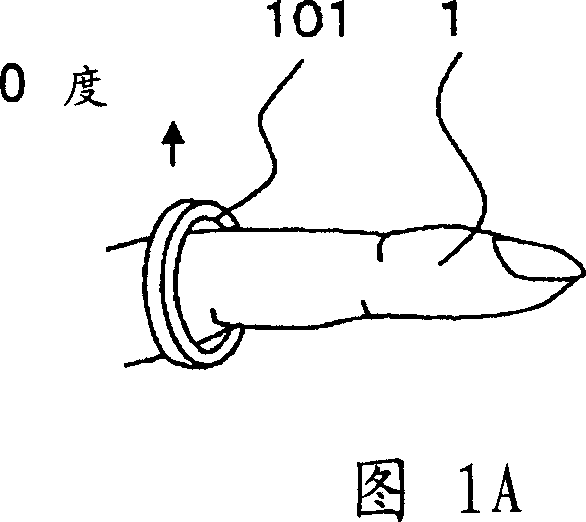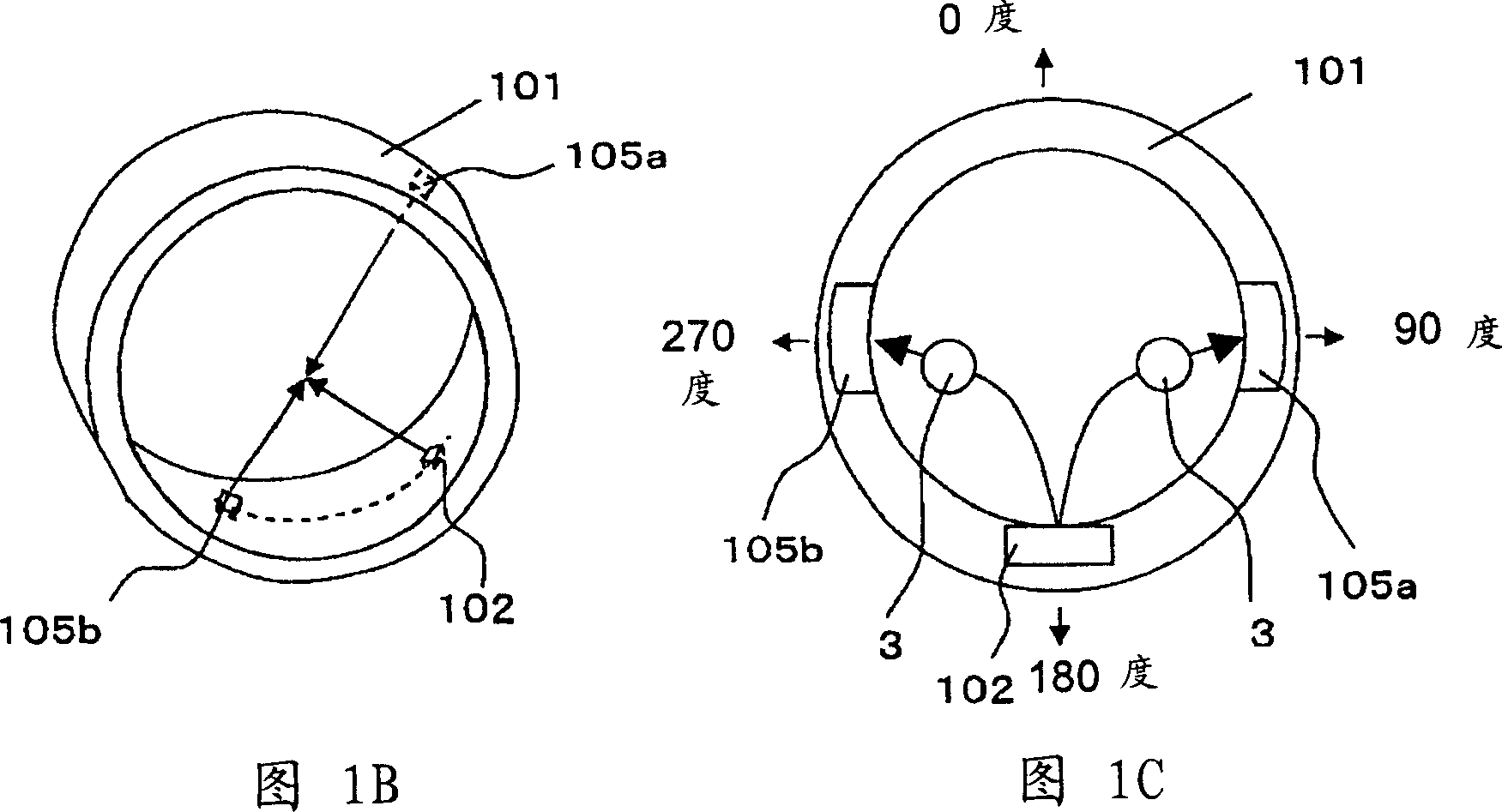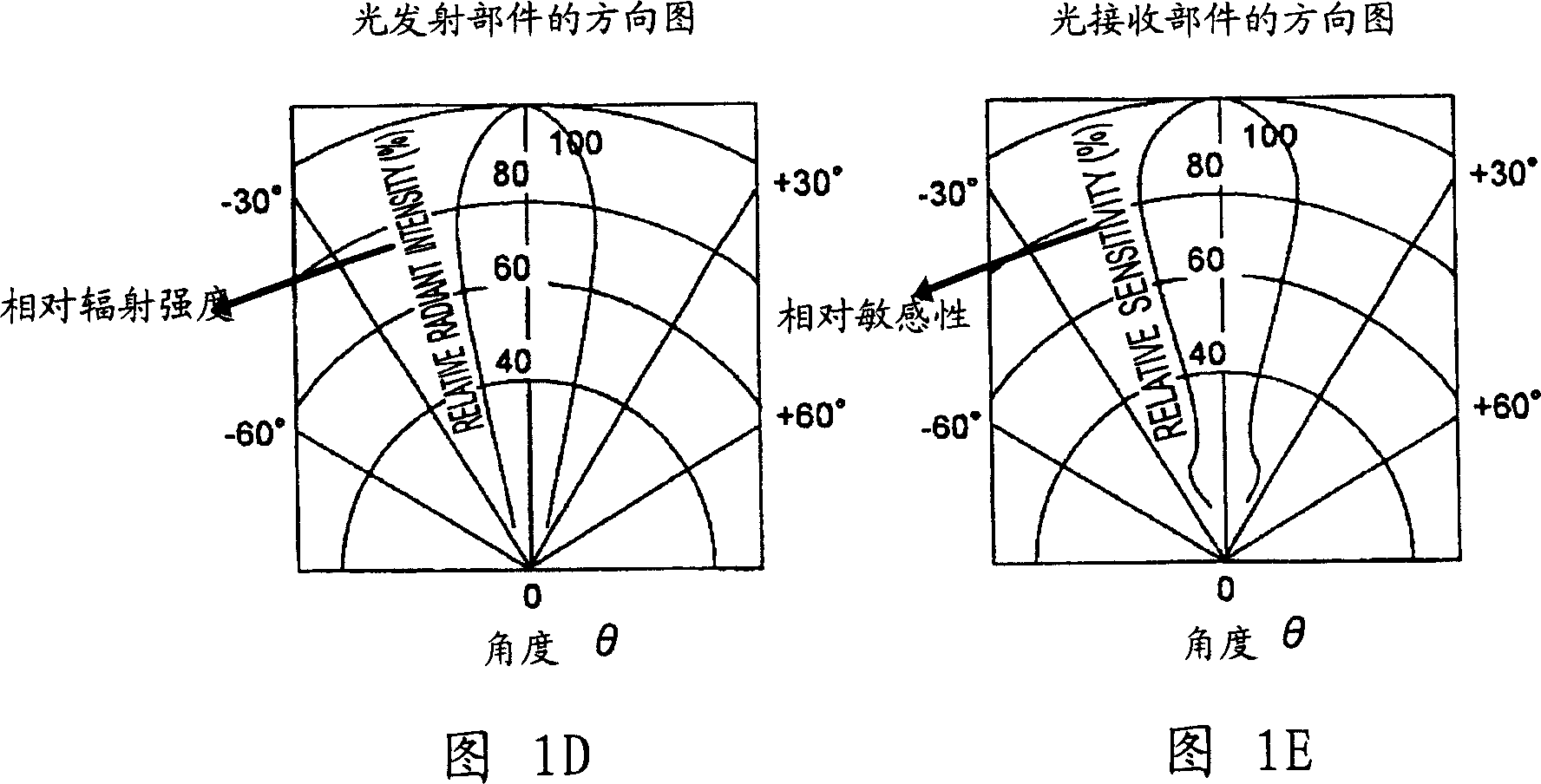Detector
A detector and light-receiving component technology, applied in the field of sensors, can solve problems such as difficult-to-wear positions, increased probability of picking up interfering light, and increased light quantity, and achieves the effects of easy-to-wear positions, improved light-receiving efficiency, and easy calibration.
- Summary
- Abstract
- Description
- Claims
- Application Information
AI Technical Summary
Problems solved by technology
Method used
Image
Examples
Embodiment 1
[0057] 1A to 1E are the finger ring sensor in Embodiment 1.
[0058]As shown in FIG. 1A , a ring sensor 101 which is a finger-ring type ring is worn on the base of a finger. The size of the ring is properly selected according to the size of each user's finger, so that the inner peripheral surface of the ring is always in close contact with the finger.
[0059] 1B and 1C show the inner peripheral surface and cross-section of the ring sensor. On the inner peripheral surface, there are a light emitting part 102 constituted by a light emitting diode, and first and second light receiving parts 105a, 105b constituted by a photodiode. The light emitting part 102 has a light emitting diode emitting red light and a light emitting diode emitting infrared light.
[0060] Fig. 1D shows a directional diagram of a light-emitting part and a light-receiving part. The light-emitting component 102 and the corresponding light-receiving component 105 have the maximum relative radiation intensi...
Embodiment 2
[0097] 3A to 3D are the ring sensor in Embodiment 2.
[0098] It should be noted that for the structure of Embodiment 2, explanations about the same structural components as in Embodiment 1 shown in FIGS. 1A to 1E and FIGS. 2A to 2B are omitted, and their differences are mainly described.
[0099] 3A and 3B, the light emitting part 202 is formed on the inner peripheral surface of the ring sensor 201, and the first and second light receiving parts 205a, 205b are formed at positions symmetrical to the light emitting axis of the light emitting part 202. Specifically, the first and second light receiving members 205 a , 205 b are placed at positions facing each other on the inner peripheral surface of the ring sensor 201 .
[0100] In addition, the light-emitting point of the light-emitting part 202 and the respective light-receiving points of the first and second light-receiving parts 205a, 205b are placed on tracks different from each other on the inner peripheral surface of the...
Embodiment 3
[0105] FIG. 4A is a perspective view showing a worn state of a finger-ring sensor in Embodiment 3 of the present invention, and FIG. 4B is a cross-sectional view showing the finger-ring sensor.
[0106] It should be noted that for the structure of Embodiment 3, explanations about the same structural components as in Embodiments 1 and 2 shown in FIGS. 1A to 1E and FIGS. 3A to 3D are omitted, and their differences are mainly described.
[0107] The first and second light receiving members 305a, 305b are divided into light receiving areas a, b, c and A, B, C, respectively.
[0108] Each light-receiving area is formed in the order of a, b, c and A, B, C along the inner circumferential surface of the ring, starting from the farthest side from the light-emitting part 302 in the circumferential direction.
[0109] In FIG. 4B , the light emitting part 302 is formed on the inner peripheral surface of the ring sensor 301 , and the first and second light receiving parts 305 a , 305 b are...
PUM
 Login to View More
Login to View More Abstract
Description
Claims
Application Information
 Login to View More
Login to View More - R&D
- Intellectual Property
- Life Sciences
- Materials
- Tech Scout
- Unparalleled Data Quality
- Higher Quality Content
- 60% Fewer Hallucinations
Browse by: Latest US Patents, China's latest patents, Technical Efficacy Thesaurus, Application Domain, Technology Topic, Popular Technical Reports.
© 2025 PatSnap. All rights reserved.Legal|Privacy policy|Modern Slavery Act Transparency Statement|Sitemap|About US| Contact US: help@patsnap.com



